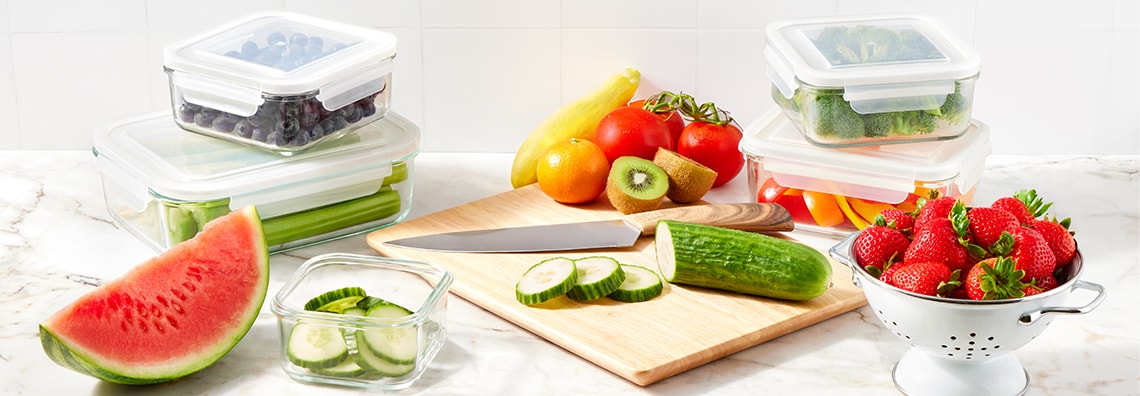Have an airtight food storage plan.
Keep these guidelines in mind to prevent foodborne illness.
- Chill leftovers and takeout food within 2 hours. If the temperature is above 90ºF, refrigerate food within 1 hour.
- Check the temperature of your refrigerator and freezer with an appliance thermometer. The refrigerator should be 40°F or below, while the freezer should be 0°F or below.
- Cook or freeze poultry, fish, ground meat, and variety meat (meat that is not cut from a standard muscle) within 2 days. Cook or freeze other beef, veal, lamb, or pork cuts within 3 to 5 days.
- When refrigerating or freezing meat, wrap the package securely with foil or plastic wrap to maintain quality and to keep meat juices from getting onto other foods.
- Throw away canned foods that have been exposed to freezing temperatures, as well as cans that are dented, rusted, or swollen.
- Know when to throw away food. You can’t always tell by its appearance or smell whether it has gone bad. Follow the expiration date on the packaging.
- Replace storage containers that have cracks, discoloration, lids that don’t seal well, or other signs of damage.
- If you store your food in plastic containers, be sure to only use food-grade plastic containers. Do not reuse single-use plastic containers.
- Only microwave foods in containers that have a “microwave safe” label. Similarly, only freeze foods in containers that have a “freezer safe” label.
For more information, check out our Food Safety FAQ page.
Sources:
Havern, Ghaida Batarseh. Keeping Food Safe When Using Plastic Containers. Michigan State University Extension. August 29, 2022.
Keep Food Safe! Food Safety Basics. United States Department of Agriculture. Last updated January 5, 2024.

 You are about to leave publix.com and enter the Instacart site that they operate and control. Publix’s delivery and curbside pickup item prices are higher than item prices in physical store locations. Prices are based on data collected in store and are subject to delays and errors. Fees, tips & taxes may apply. Subject to terms & availability. Publix Liquors orders cannot be combined with grocery delivery. Drink Responsibly. Be 21. For prescription delivery, log in to your pharmacy account by using the Publix Pharmacy app or visiting
You are about to leave publix.com and enter the Instacart site that they operate and control. Publix’s delivery and curbside pickup item prices are higher than item prices in physical store locations. Prices are based on data collected in store and are subject to delays and errors. Fees, tips & taxes may apply. Subject to terms & availability. Publix Liquors orders cannot be combined with grocery delivery. Drink Responsibly. Be 21. For prescription delivery, log in to your pharmacy account by using the Publix Pharmacy app or visiting 